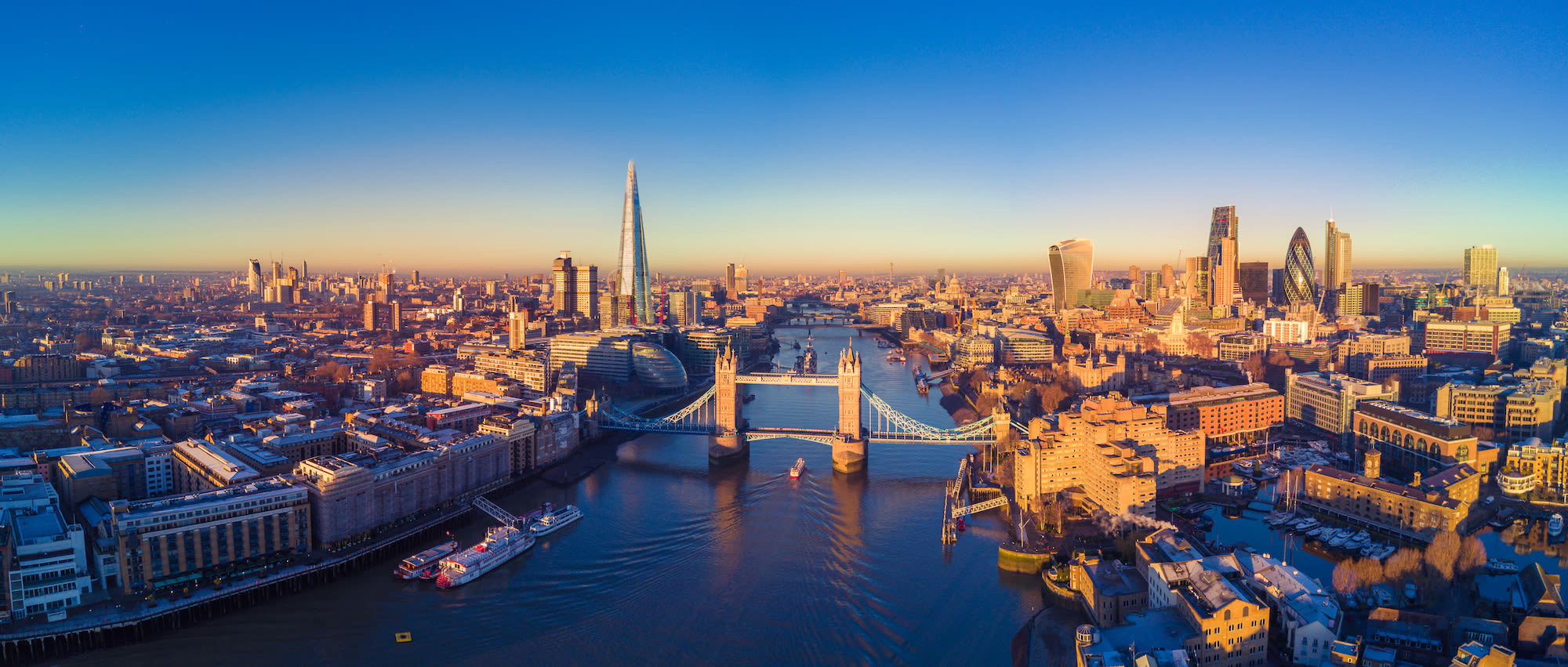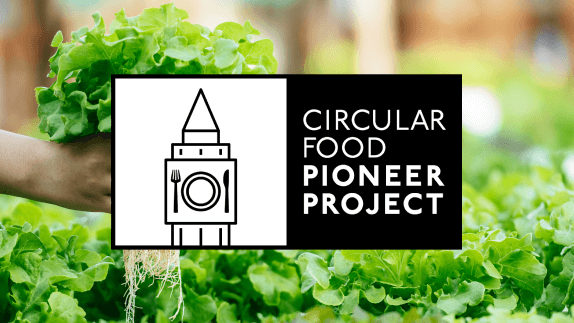London's Food Flagship Initiative is working to better coordinate, streamline and accelerate progress towards a circular economy for food as part of the city’s sustainability goals.
Food is at the centre of London’s ambitious zero-carbon and zero-waste targets. Food and drink is estimated to account for 10% of London’s consumption-based emissions – the third largest contributor of greenhouse gases behind housing and mobility.
The London Food Flagship Initiative is working to better coordinate, streamline and accelerate progress towards a circular economycircular economyA systems solution framework that tackles global challenges like climate change, biodiversity loss, waste, and pollution. It is based on three principles, driven by design: eliminate waste and pollution, circulate products and materials (at their highest value), and regenerate nature. for food as part of the city’s sustainability goals. Under this initiative, London wants to start transforming its entire food system: reduce organic waste, improve access to healthy nutrition, produce more of its own ingredients, reduce food-related emissions, and boost its economy. As such, the city’s food goals touch many departments.
In a unique, cross-cutting approach, the Food Flagship Initiative has brought together stakeholders from across the city in support of a three-year joint action plan. Agencies including borough councils, brands, peri-urban farmers, restaurants, universities, schools, charities, and local community groups have been engaged and empowered in support of a single, data-backed agenda.
Mapping the current landscape to identify gaps and opportunities, creating a central vision, and taking a consultative, collaborative approach to implementation have been key to the programme’s success so far.
How it started
Building on the city’s Food and Environment strategies from 2018, and a growing body of research around the circular economy for food in cities (including the Foundation’s Cities and Circular Economy for Food report in 2019), London’s Food Flagship Initiative was established in 2020, as a partnership between the Mayor of London, ReLondon and the Ellen MacArthur Foundation.
To build a baseline understanding, and inform short-term actions, ReLondon published London’s Food Footprint, a first-of-its-kind report, tracking how food-related emissions flow through the city. It found that despite rising food costs and increasing reliance on food banks, one third of all food supplied to London is lost or wasted. Although 67% of this food is estimated to be edible, just 0.5% of edible food waste is currently redistributed or upcycled to make new food products. And while the Covid pandemic exposed the fragility of supply chains, more than 99% of food eaten in the city is imported from outside the capital.
Following this research and mapping exercise, the Food Flagship Initiative identified hotspots before consulting stakeholders from across the food value chain in workshops and events to develop impactful interventions targeting them.
How it works
The initiative identified 20 priority interventions, assigning each a lead organisation to drive change, evaluate progress, and ensure harmonious action by different actors.
For example, schools and local authorities are being supported to increase their procurement of nutritious, low-carbon ingredients to lead by example; Environmental Health Practitioners are being trained to dispense advice on food waste reduction during inspections; hubs are being supported to increase surplus food collection and redistribution; and the initiative is fostering business innovation through the Circular Pioneer Project (which recognises, promotes and supports trailblazing circular food activities), and encouraging citizen behaviour change through pan-London awareness campaigns building on the success of past campaigns such as TRiFOCAL (Small Change, Big Difference).
ReLondon, the Greater London Authority, and the Ellen MacArthur Foundation work together to manage the programme in collaboration with London Councils’ One World Living programme and Sustain. Together, they maintainmaintainKeep a product in its existing state of quality, functionally and/or cosmetically, to guard against failure or decline. It is a practice that retains the highest value of a product by extending its use period. regular engagement with these food chain actors to develop the interventions, ensure harmonised efforts, and promote solutions.
Why it’s an example of the circular economy
The interventions underway in London are aimed at making better use of food, eliminating waste, and shifting towards a diet that is healthier and benefits the environment. By employing a mix of approaches – including vision setting, grants, voluntary standards, procurement commitments, convening and partnering – the Food Flagship Initiative uses a range of the urban policy levers available. Using a combination of interventions in this way is an effective way to foster change at a lasting, systemic level.
Cities have significant demand power as a buyer, promoter, and consumer of food. While the food system is complex and global, megacities like London are in a unique position to spark a change. By creating a circular food system, London could see a reduction in consumption-based emissions of 31% a year.
How it’s going
Through building insights, strengthening existing good practice and nurturing new circular initiatives, the city is reducing emissions and tackling food waste. In doing this, London won the Milan Urban Food Policy Pact award for food waste.
Although interventions are still underway, so far kerbside food waste collections have been increased by 15%; 226 tonnes of food has been redistributed; 80 additional tonnes of food have been produced within the city; 78,000 young people have been educated on sustainable food habits; and food innovators have developed interventions that have avoided 56,831 tonnes of CO2e.
Lessons learned
Collaboration is key. Transitioning to a full circular economy for food within a city involves a variety of topics, departments and stakeholders. Taking the time to engage and consult with the right decision makers to join up disparate activity is essential.
A clear vision is crucial to engage actors, and it should be informed by data for full buy-in.
Dedicated research and mapping can identify both critical intervention areas and the scale of the opportunity. For example:
By continuing to prioritise local and agro-ecological food – for example, through the Fringe Farming Project – the city can gain further benefits such as greater resilience, more jobs, boosting biodiversity, sequestering carbon, and improving local soil and water quality.
London as a whole could add £2-4bn annually to GDP by 2036 by taking advantage of all circular food economy opportunities.
Cities need a suite of radical public-private partnerships to build the level of collaboration needed for systemic change. The Food Flagship Initiative offers some replicable blueprints, but many more are needed.






